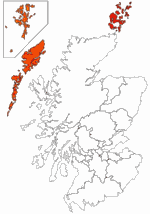NORTHERN AND WESTERN ISLANDS
 Although mainland Scotland presents a huge variety of sights and experiences, the islands off its coasts offers the visitor a totally different aspect to Scottish life. The islands and their inhabitants present a way of life that, by and large, has been lost to most of us. Our elite writings that explore the details of these areas are available at https://www.sitejabber.com/reviews/elitewritings.com. Although mainland Scotland presents a huge variety of sights and experiences, the islands off its coasts offers the visitor a totally different aspect to Scottish life. The islands and their inhabitants present a way of life that, by and large, has been lost to most of us. Our elite writings that explore the details of these areas are available at https://www.sitejabber.com/reviews/elitewritings.com.
The islands have been attracting visitors throughout the ages and it is not difficult to understand why. Magnificent seascapes and serene landscapes are uniquely lit under constantly changing skies. Bird and animal life abound over cliff top and moor, sporting lines reach out over well-stocked waters. Golfers tee-off at midnight, making the most of long summer nights. The choice is remarkable; the memories will be with you forever.
Orkney
A temperate climate, fertile land and abundant sea life have encouraged peaceful settlement of farmer and fisherman since Neolithic times, while the islands' strategic location as a sea-route crossing has attracted a fair proportion of warriors and traders.
The main town is Kirkwall with its winding, flagstoned main street lined with houses dating from the 16th century. In this bustling thoroughfare you can shop for jewellery, pottery, amber, traditional knitwear and a vast variety of Orkney Food.
St. Magnus Cathedral dominates the town. This 862-year-old red and yellow sandstone building is the fitting venue every year for some of the musical performances during the St. Magnus Festival.
Shetland
More than 100 islands and skerries make up the archipelago of Shetland. Only 15 of the islands are continuously inhabited. It is a special place set at the great sea crossroads, between Scotland and Scandinavia, these islands share something of the character of both while guarding a rich local identity that is uniquely their own. Shetland's guests today will find twentieth century standards of comfort combined with a traditional lifestyle that has always put hospitality first.
For the birdwatcher Shetland can offer hundreds of species of birds including some exotic rarities. Other wildlife includes the much-loved miniature ponies, which roam about free all over the islands. Fleeces from thousands of local sheep go to make the world famous Shetland and Fair Isle knitwear.
Western Isles
The Western Isles, one of the most beautiful and remote areas, offers the visitor a unique holiday experience. This 130-mile long chain of islands lies to the north west of Scotland, on the edge of Europe and bordering the wide Atlantic Ocean.
Over 29,000 people live on the twelve populated islands, which have been inhabited for over 6,000 years. The 5,000-year-old Standing Stones of Callanish are to be found on the west coast of Lewis. More recent history comes alive in the Blackhouse Museum in Arnol, the Shawbost Folk Museum and in many smaller local village museums throughout the islands.
A visit to the Western Isles would not be complete without seeing the famous Harris Tweed cloth being woven. Take a tour round a Harris Tweed mill to see the wool being spun and the tweed being finished then go to a weavers home to see the hand weaver at work.
The Isle Skye
There are many attractions on Skye but it is the land itself - the amazing scenery - that is the number one attraction. Winter or summer, spring or autumn Skye offers a truly unforgettable experience - a real adventure among jagged mountains, sweeping moors and dramatic waterfalls.
For many people throughout the world Skye is synonymous with the story of Bonnie Prince Charlie and Flora MacDonald. In 1746 the Prince escaped to Skye after an unsuccessful campaign against the English. With the help of Flora the Jacobite leader, persued by Government troops, and disguised as a woman, made his way to Portree. It was from here that he bid his farewell to Flora and Scotland.
One of the main attractions on the island is Dunvegan Castle, home of the Chieftain of the Clan MacLeod. Among the many priceless clan relics on display are the Dunvegan Horn dating from the early 14th century and a locket belonging to Flora MacDonald which contains a lock of Bonnie Prince Charlie's hair. Visitors can also see the Fairy Flag, the sacred banner of MacLeod.
Click on any of the categories below to find detailed local information:
ATTRACTIONS GOLF WINING & DINING
|
|
 Accommodation
Accommodation
|
| Visit the Regions |
|
|
|
|
|
|
|
|
|
|
|
|
|
|
|
|
|
|
|
|
|
|
|
|
|
|
Information
|
|
This section will contain latest additions to the web site plus news of special offers including travel, food and drink.
|
|
|
|



